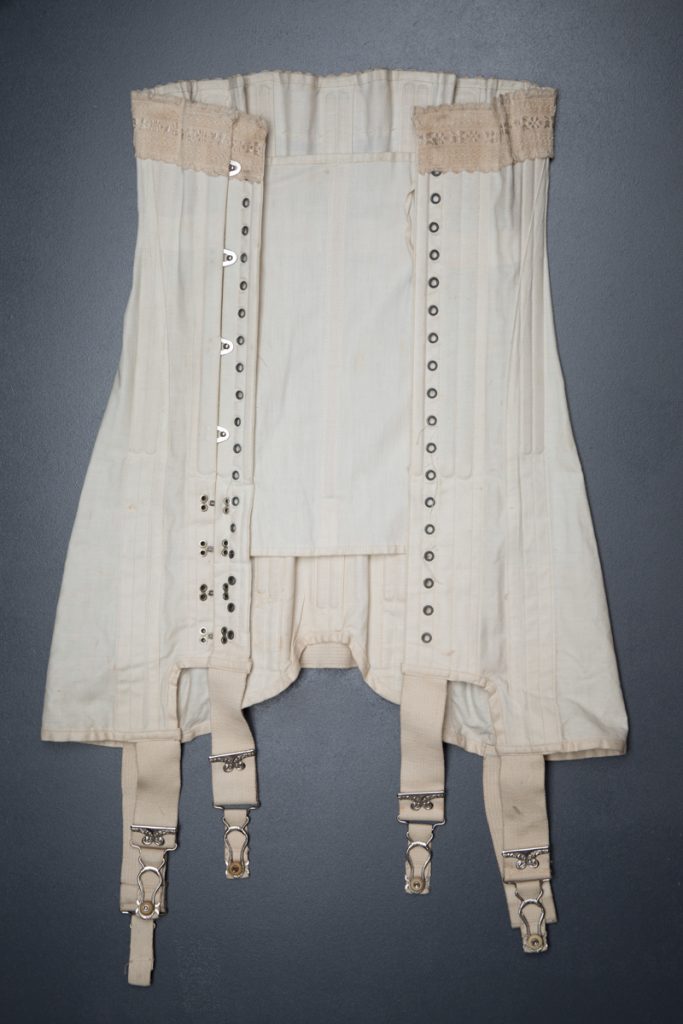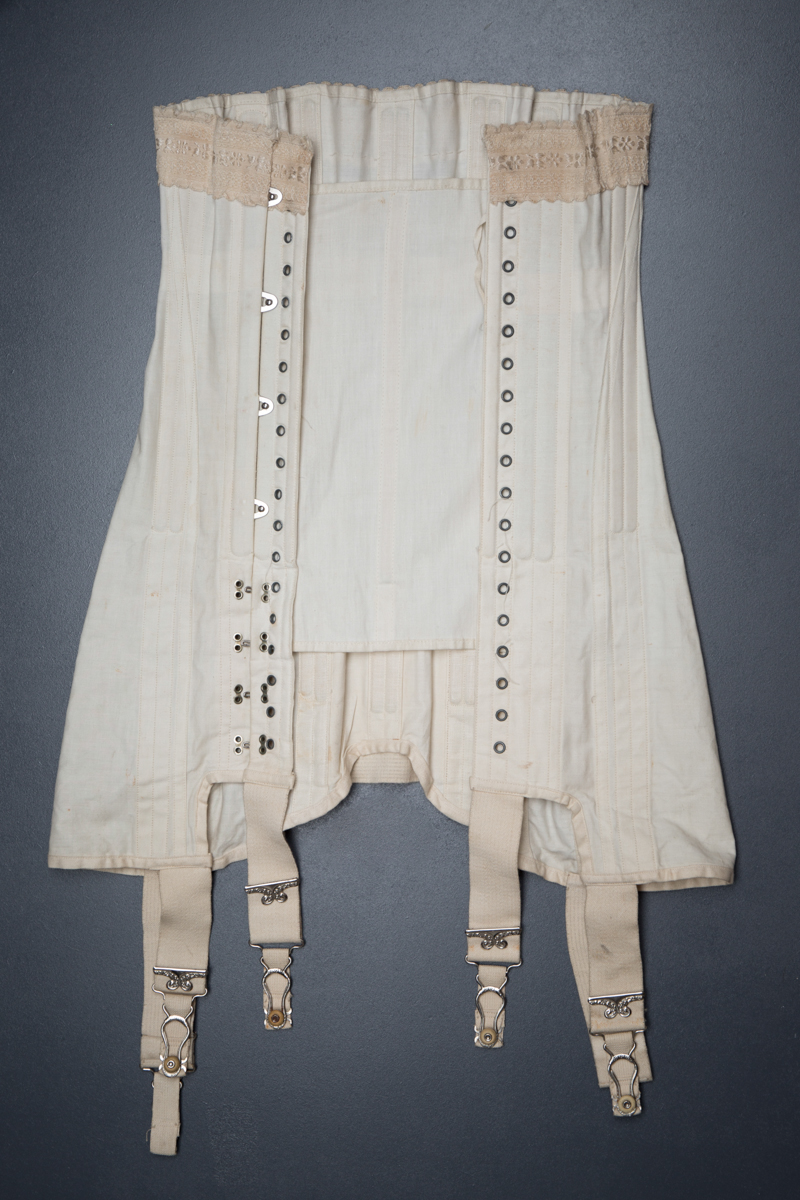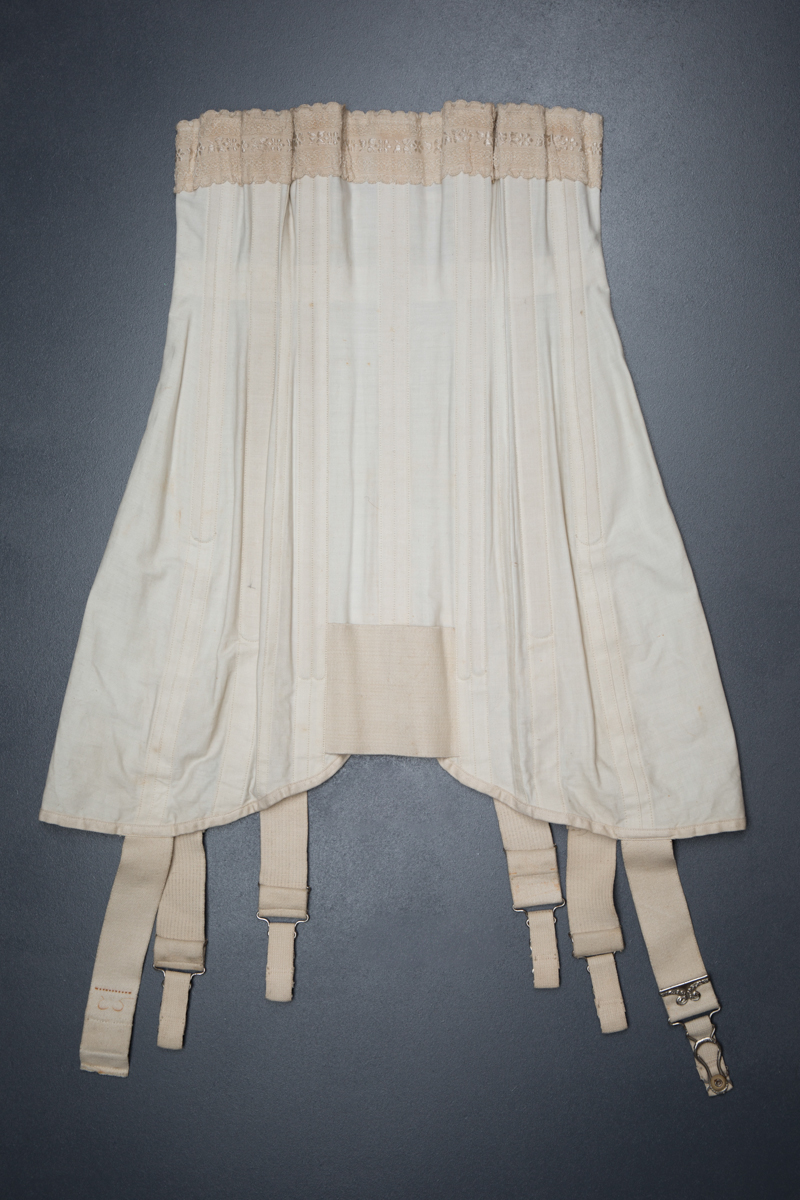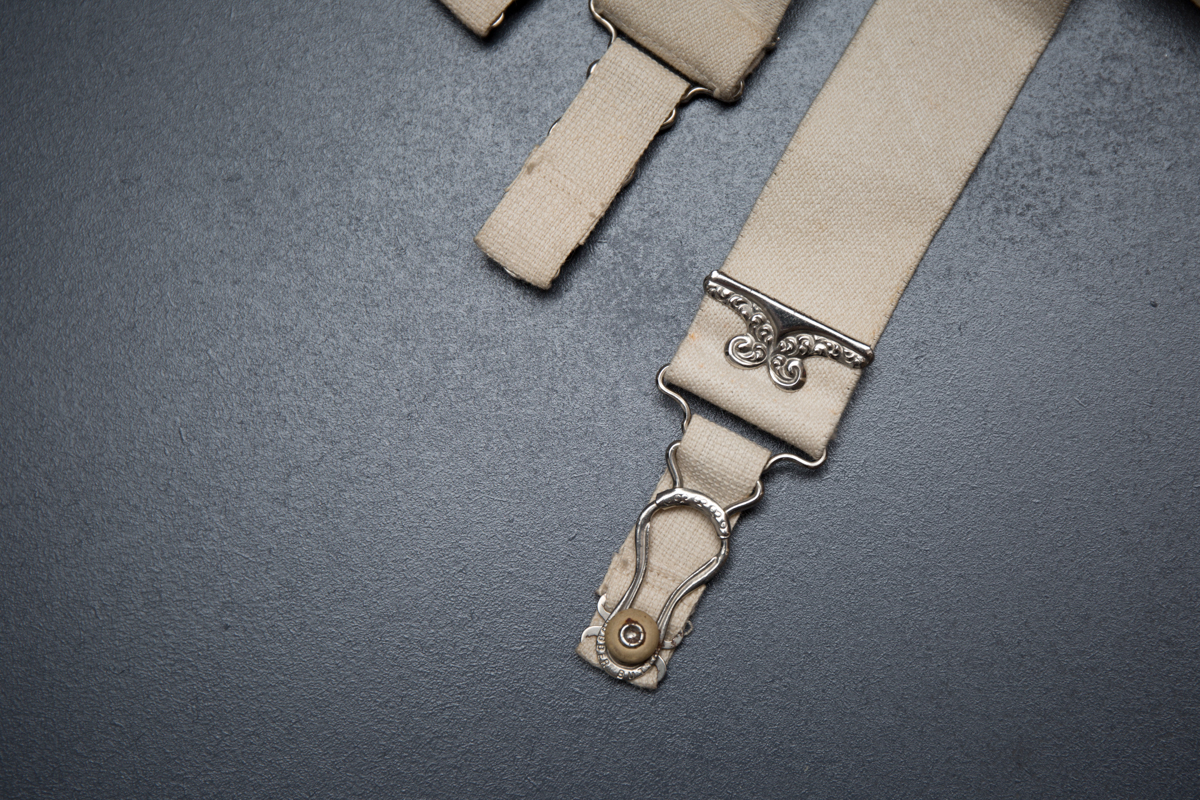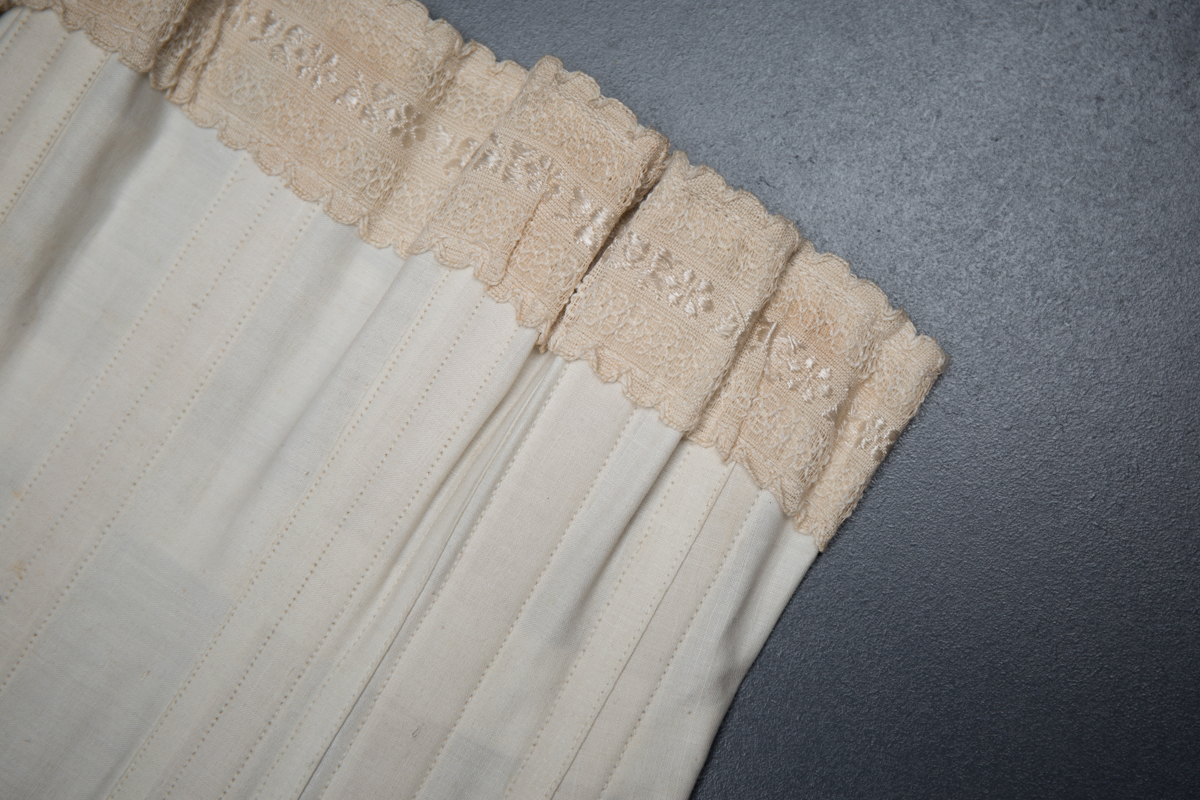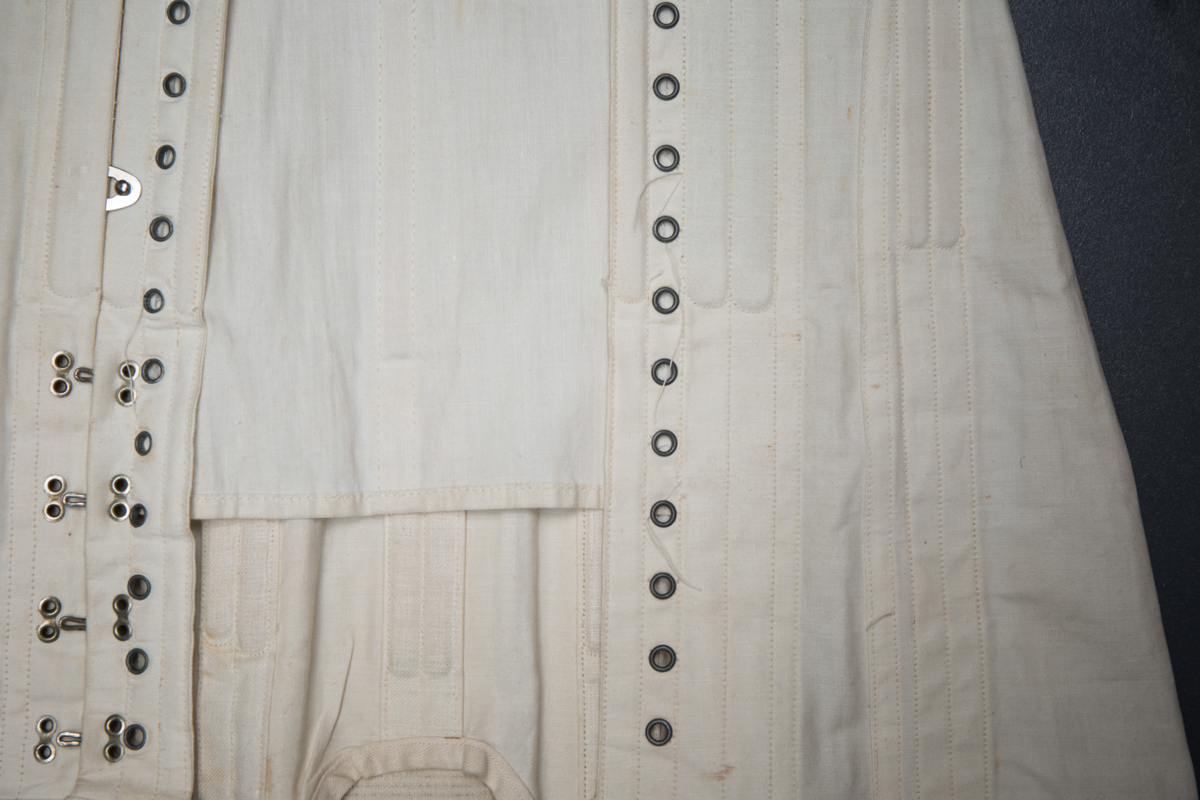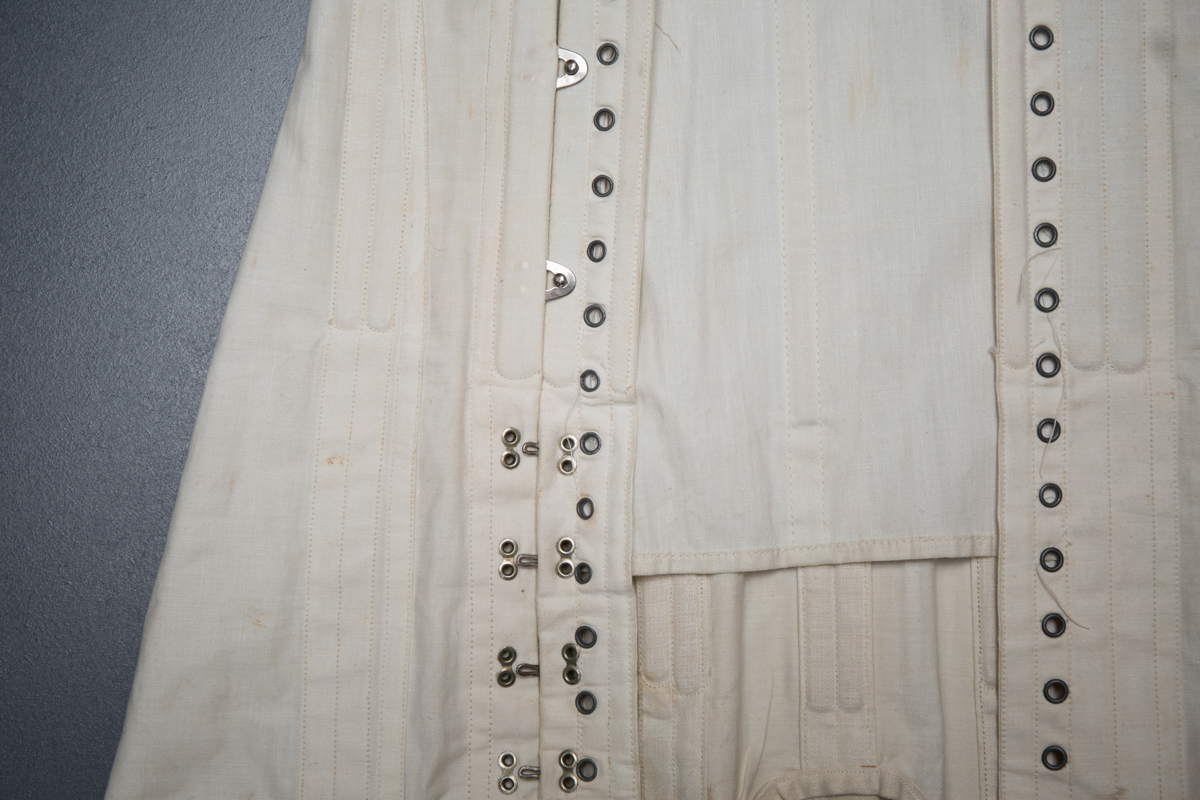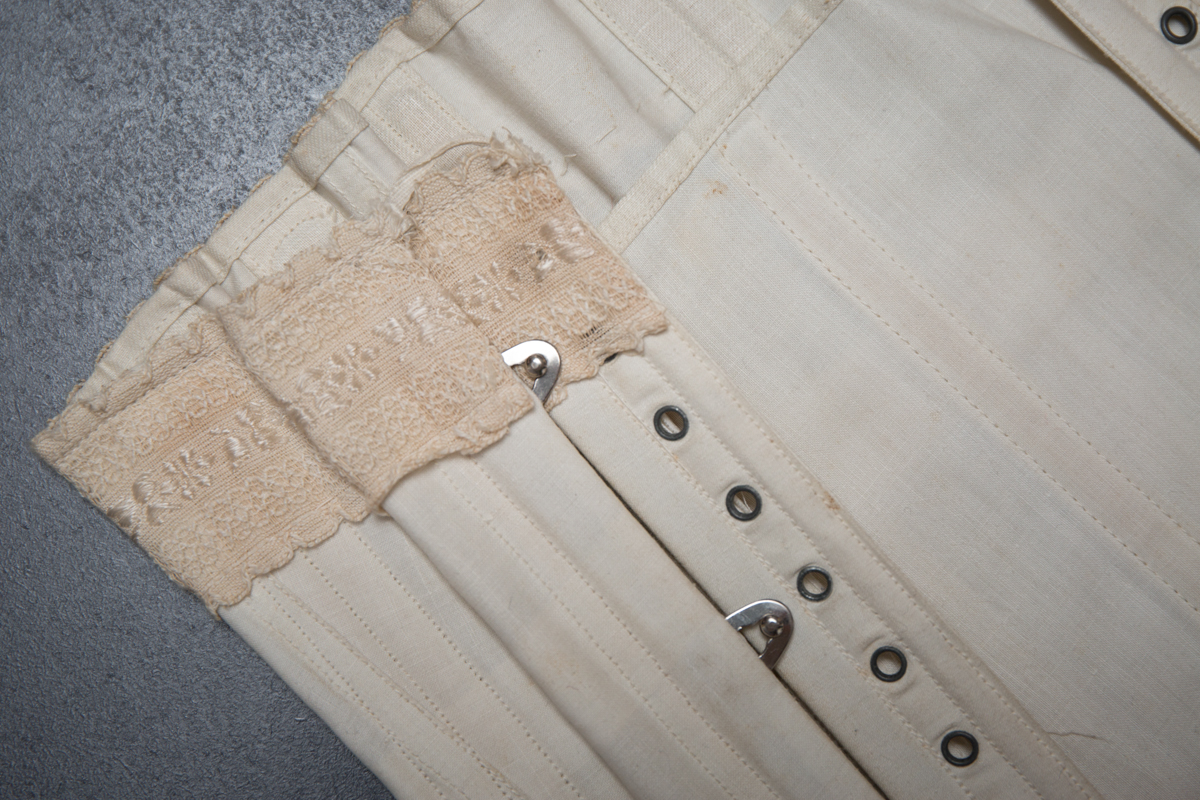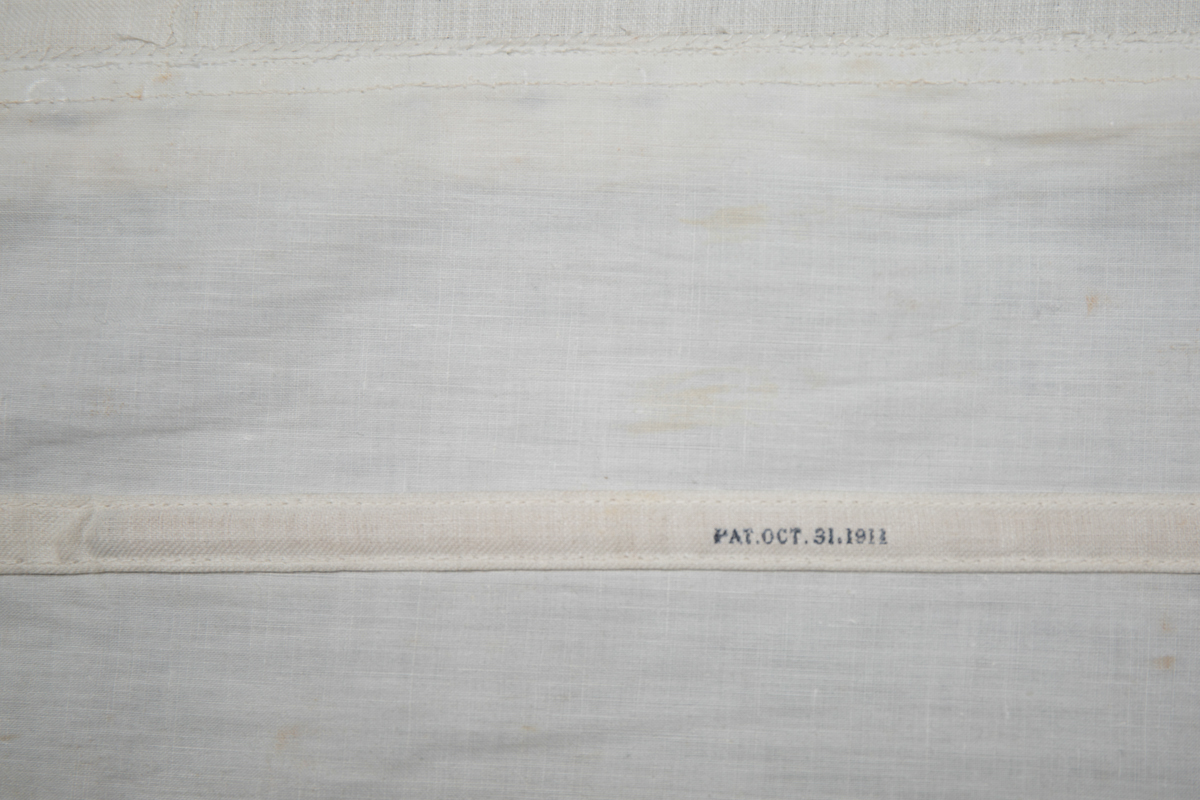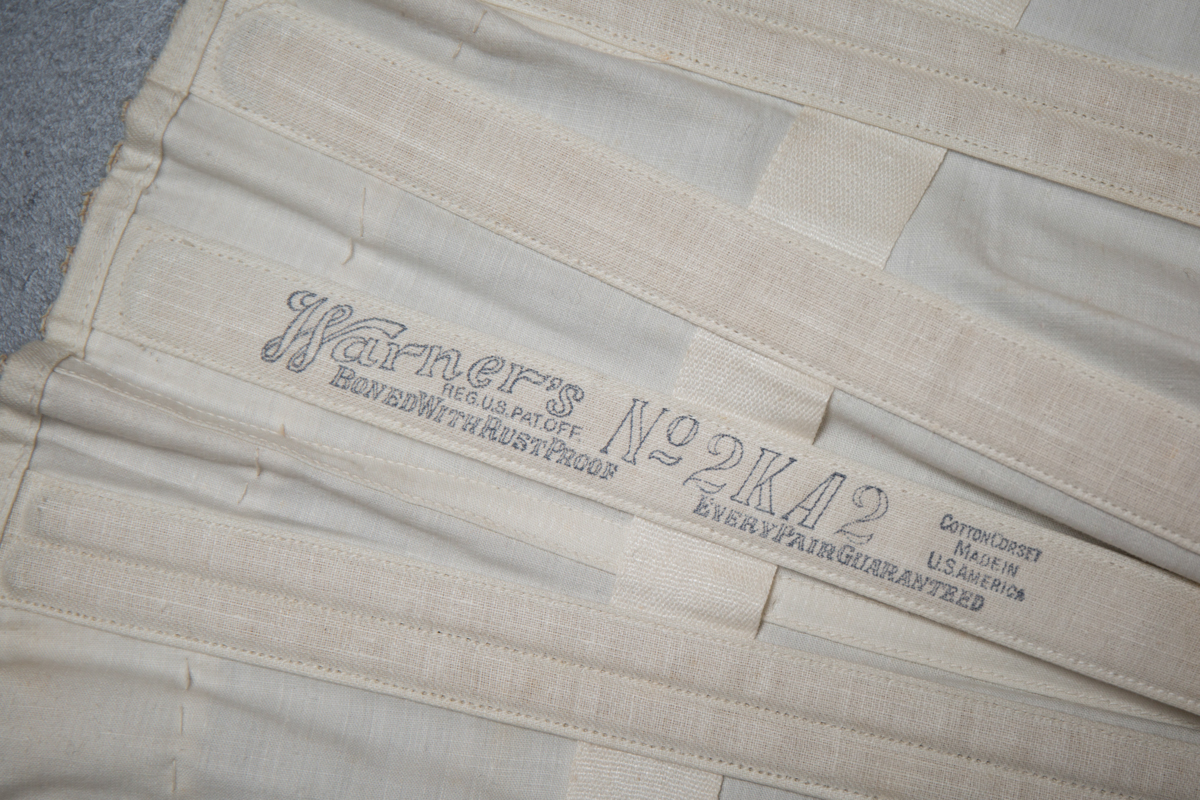Date: c. 1911
Origin: United States
Fabric: Cotton canvas
Brand: Warner
In the late nineteenth century, New York physician Dr Lucien Warner gave up his practice to begin a new career lecturing on women’s health issues, including the effects of the corset. In 1873, he designed a corset that provided the desired fashionable shape along with increased flexibility. The following year, Lucien Warner and his brother founded Warner Brothers Corset Manufacturers. After buying Mary Phelps Jacob’s brassiere patent in 1915, Warner’s went on to introduce lettered cup sizing in the 1930s and released its first line of extremely successful ‘Merry Widow’ foundation garments in 1952.
This front fastening and lacing corset, although not the first of its kind, was an innovation that allowed women to dress themselves without the help of others. The design was patented on 31st October 1911, and features a 4 loop/pin busk and row of hooks and eyes offset to the front right side of the garment, with a centre front panel of eyelets and lacing backed by a cotton modesty panel that has a single vertical flat steel bone to maintain vertical tension. The sewn in modesty panel limits how much the corset can be adjusted.
The silhouette of this corset is relatively streamlined and sleek, without dramatic curves or offering much waist reduction. It is typical of ‘Titanic Era’ fashion, with previously fashionable corset silhouettes being incompatable with the limited lacing capacity construction, as the corset likely wouldn’t open far enough to close over the body.
The corset has 5 vertical panels per side, with vertical twill bone channels sewn to the interior of the garment, sandwiching in place a horizontal twill ewaist tape. The corset is boned with steel “Rust Proof” flat steel bones throughout, using a mix of doubled up 8mm width bones and wider 15mm bones. Most bones do not extend through the entire length of the channel, and a machine lockstitch is used around the curved ends of the bones to hold them in place. The loose space at the bottom of each channel gives this longline cut a greater freedom of movement.
The top and bottom edges of the corset are bound in cotton tape, with a decorative woven cotton trim machine lockstitched to the top edge. There are two narrow pieces of cotton tape extending from the two centre front ends, to be tied in a bow when the corset is closed. A wide piece of elastic is sewn into the bottom of the centre back seams. Although it has dried out now, this would have offered an innovative level of fit flexibility and comfort.
Each side of the corset has 3 elastic suspender straps with filigree style adjusters and grips. The suspender clip is stamped with the text ‘rubber button’. The interior of the garment has two stamped boning channel. One has the brand name and logo with style and construction information: ‘Warner’s / Reg. US. Pat. Off. / Boned With Rust Proof / No. 2KA2 / Every Pair Guaranteed / Cotton Corset / Made In U.S. America’. The stamp on the rear of the modesty panel states ‘Pat. Oct. 31 1911’.
From the collection of Karolina Laskowska
